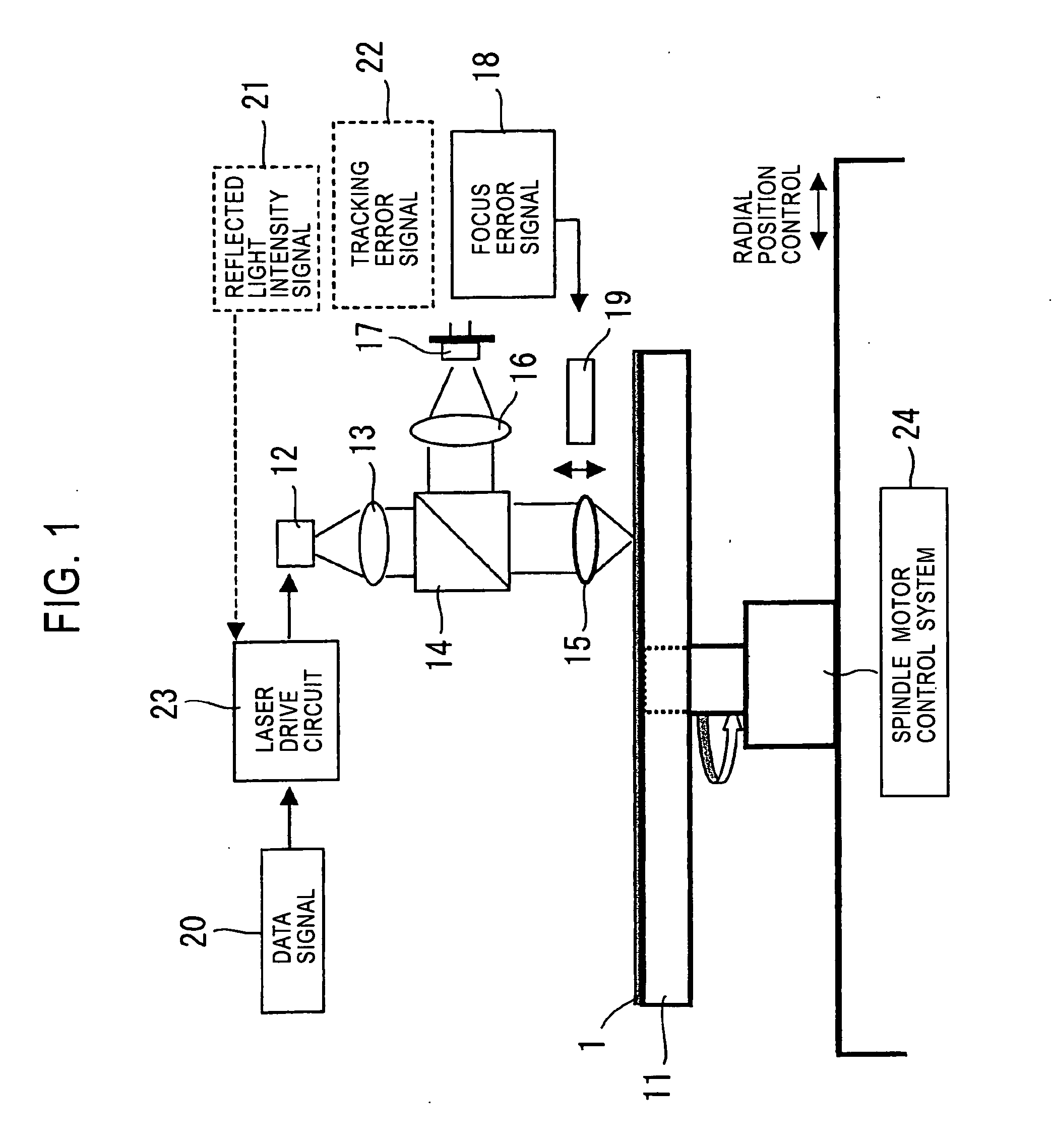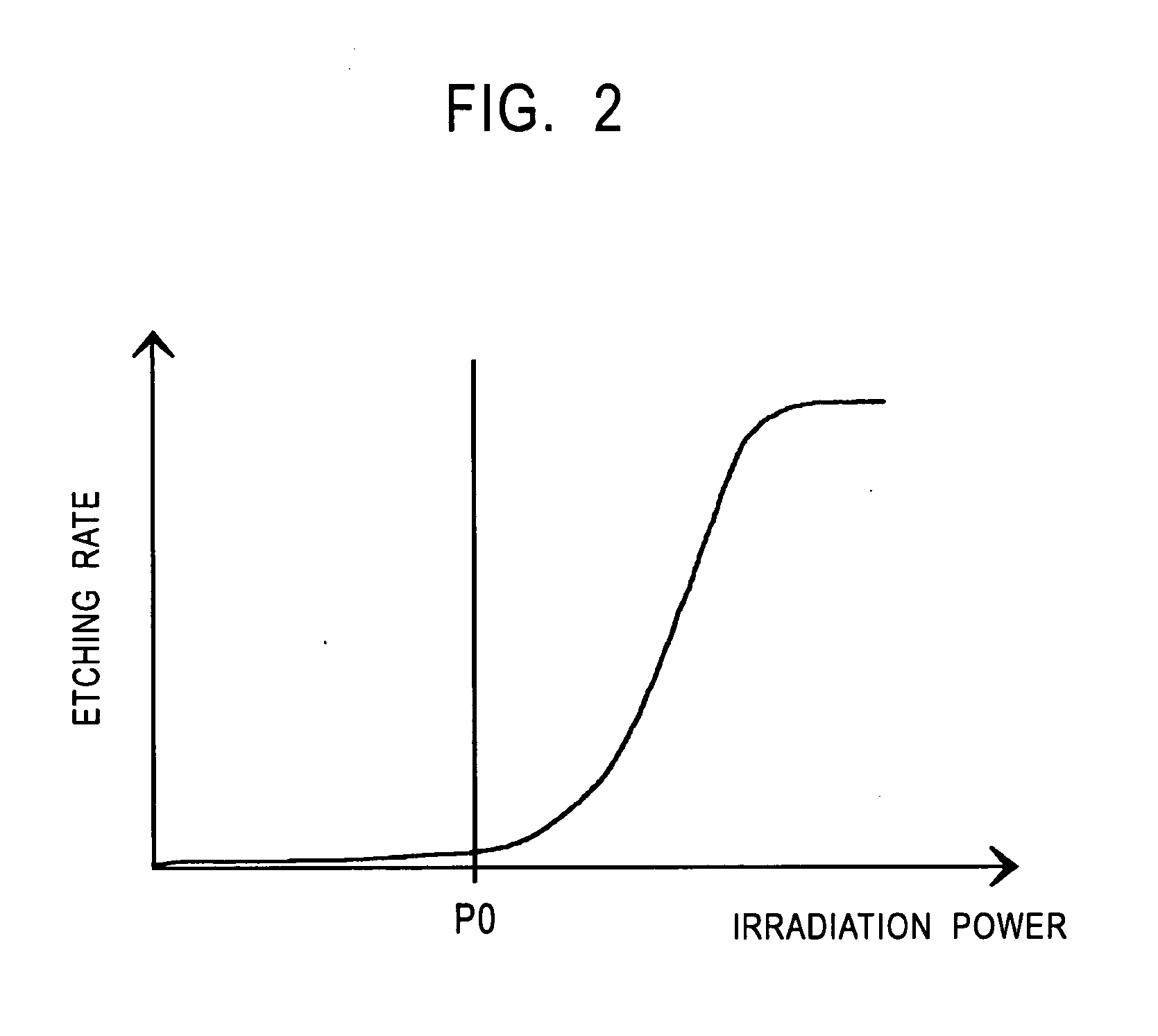Resist material and nanofabrication method
a technology of resist material and nanofabrication method, which is applied in the direction of auxillary/base layers of photosensitive materials, instruments, photosensitive materials, etc., can solve the problems of metals, however, that present difficulties in nanofabrication by ultraviolet or visible light exposure, and achieve high-precision nanofabrication, high drawing speed, and reduced exposure time
- Summary
- Abstract
- Description
- Claims
- Application Information
AI Technical Summary
Benefits of technology
Problems solved by technology
Method used
Image
Examples
example 1
[0096] In Example 1, a resist master for optical discs was prepared with incompletely oxidized trivalent tungsten as a resist material.
[0097] A resist layer of incompletely oxidized tungsten was uniformly deposited on a glass substrate having a sufficiently smooth surface by sputtering. The sputtering was carried out with elemental tungsten as a sputtering target in an argon-oxygen mixed atmosphere, of which the oxygen gas concentration was changed to control the degree of oxidation of the incompletely oxidized tungsten.
[0098] The deposited resist layer was analyzed with an energy dispersive X-ray spectrometer (EDX) to give x=0.63 in terms of composition W.sub.1-xO.sub.x, wherein the resist layer was 40 nm thick; and the dependence of the refractive index on the wavelength was measured by spectroellipsometry.
[0099] The substrate covered with the resist layer was disposed on the turntable in the exposure apparatus shown in FIG. 1. The resist layer was irradiated with a laser having a...
example 2
[0105] In Example 2, a resist master for optical discs was prepared with incompletely oxidized trivalent molybdenum as a resist material.
[0106] Example 2 employed nearly the same process as Example 1 except that molybdenum was used as a sputtering target. Through the process, a resist layer of incompletely oxidized molybdenum was deposited on a glass substrate, was exposed, and was developed to form pits, as shown in FIG. 6. The deposited resist layer was analyzed with an EDX to give x=0.59 in terms of composition Mo.sub.1-xO.sub.x.
[0107] In contrast with incompletely oxidized tungsten, the resist layer of the incompletely oxidized molybdenum forms pits at exposed areas, which are convex with respect to an unexposed area, as shown in FIG. 6. This is because the incompletely oxidized molybdenum functions as a negative resist to the tetramethylammonium hydroxide solution.
example 3
[0114] In Example 3, a resist master for optical discs was prepared with incompletely oxidized trivalent tungsten and molybdenum as resist materials, and an optical disc was finally prepared. FIG. 7 shows an outline of the preparation process.
[0115] An amorphous silicon intermediate layer 101 having a thickness of 80 nm was uniformly deposited on a substrate 100 of a silicon wafer by sputtering. A resist layer 102 of incompletely oxidized tungsten and molybdenum was further uniformly deposited on the substrate 100 by sputtering (FIG. 7(a)). The sputtering was performed in an argon atmosphere with a sputtering target of incompletely oxidized tungsten and molybdenum. The deposited resist layer was analyzed with an EDX to give 80:20 in the ratio of tungsten to molybdenum contained in the deposited incompletely oxidized tungsten and molybdenum, and 60 atomic percent in oxygen content. The resist layer had a thickness of 55 nm. Electron diffraction analysis by a transmission electron mic...
PUM
| Property | Measurement | Unit |
|---|---|---|
| wavelength | aaaaa | aaaaa |
| pit length | aaaaa | aaaaa |
| pit length | aaaaa | aaaaa |
Abstract
Description
Claims
Application Information
 Login to View More
Login to View More - R&D
- Intellectual Property
- Life Sciences
- Materials
- Tech Scout
- Unparalleled Data Quality
- Higher Quality Content
- 60% Fewer Hallucinations
Browse by: Latest US Patents, China's latest patents, Technical Efficacy Thesaurus, Application Domain, Technology Topic, Popular Technical Reports.
© 2025 PatSnap. All rights reserved.Legal|Privacy policy|Modern Slavery Act Transparency Statement|Sitemap|About US| Contact US: help@patsnap.com



